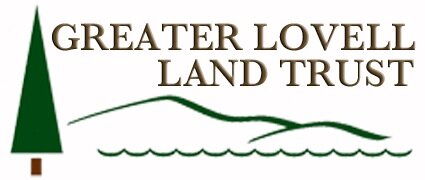What happens to wildlife when it floods?
Below are answers from our volunteer naturalists.
“That's a really good question. It varies widely by species. If they can, animals move to higher ground, but underground burrows, or places like the inside of a beaver lodge (just above normal water level) have to be evacuated, which leaves the animals vulnerable to weather, and predators. Birds will shelter from the rain if they can, but they may need to dry out their feathers before they do much flying. Insects may hitch a ride on a floating log. And sadly, some animals may be unable to avoid the floods, and die.”- Moira Yip
“Flooding (and droughts) have been a part of the natural cycle for eons. Plants and wildlife have adapted to these fluctuations without much harm. However climate change has shifted the amount and intensity of rain/flooding that may increasingly threaten wildlife. Two examples:
1. Kingfishers generally nest in the sandy banks along streams that are soft enough for them to burrow deep and tall and steep enough to make it hard for predators to reach - regular intense flooding could destroy/ limit this kind of habitat.
2. Beaver lodges are designed with 2 underwater entrances, a shelf inside above the water line and an air vent. A sudden large rise in water level may overcome the shelf area leaving the beavers unable to use the lodge and out in the open vulnerable to predators. (I saw this happen to a lodge on the Cold River near the entrance to Charles Pond).”- Sarah O’Neil
"It’s an interesting question because it’s a truly ecological one. Perhaps the first place to start is to note that the effects of flooding on wildlife depend on both where and when the flooding occurs. In areas subject to regular, seasonal flooding, such as major river floodplains and freshwater marshes, the fauna may be well adapted to changing water levels, and the health of the ecosystem may even depend on them to cycle nutrients, spread seeds, and provide seasonally available breeding areas. On the other hand, in areas where floods are unusual and unpredictable their effects may be more deleterious, leading to many of the problems noted in what follows.
The timing of the flooding matters a great deal. Most flooding occurs in the spring, especially in this area, when the snowpack melts and rivers and lakes rise. In other parts of the world and particularly in the tropics seasonal rain patterns may determine the timing of floods. In our area, flooding in the spring, if it is more severe than normal, potentially has more deleterious consequences than flooding in the winter because it happens when so many animals are reproducing and when annual plants are beginning to grow. Flooding can cause displacement of many non-aquatic animals, and even lead to breeding sites being abandoned. For instance, during the high flooding of last spring an active fox den near the junction of the Charles River with the Old Saco had to be abandoned when the kits may not have been completely ready. The small mammals of the flooded fields and meadows that the foxes preyed on probably were displaced as well, if they survived. Ground nesting birds can be affected, including shore nesters like loons, if the water swamps their nests, as happened, apparently, to many area loons last spring. Even aquatic animals can be detrimentally affected by spring flooding. Fish egg laying sites can be disrupted by silt, for example. Fish and aquatic invertebrates can be transported to areas where they may become stranded as the flooding recedes.
Floods in the winter time, like the one we are currently experiencing, may have less immediate impact on wildlife in part because most species are not in vulnerable stages of their reproductive cycles. Many species living in wet or watery areas, such as frogs, turtles, snakes, and insects, have already taken refuge for the winter in locations safe from detrimental effects. Large species, like deer and moose, have left the bottomlands and moved upland. But of course, floods can affect the habitats along rivers, lakes, and swamps in ways that may degrade them for use by wildlife, uprooting vegetation, depositing silt and sand, causing erosion, even changing stream bed and river channels. Flooding can also spread pollution, especially when human altered landscapes are affected. Flooding of road ways and urban infrastructure can wash salt, oil, and other chemicals as well as garbage and debris into waterways. Flooding of agricultural lands can spread residues of pesticides, herbicides, and fertilizers.
One species that is interesting to contemplate in the context of winter flooding is the beaver. Most beavers depend on their dry, relatively warm lodges to survive the winter. Are these refuges at risk from flooding? The living chambers are normally above the water level. But if that level rises? Beaver lodges built on river banks and lake shores may be at risk in this way, but those built in beaver ponds, bodies of shallow water that the beavers create by damming brooks and streams, may not be. The water levels in those ponds and marshes are determined by the height of the dams the beavers build and maintain. And like a bowl of water, the level can never rise higher than the rim."- Peter Ellison
"There is also an immediate fight or flight response. As winds and rain increase, wildlife detect danger in the unsettled conditions and adrenaline kicks in. Adrenaline is one of the emergency hormones that moves the body in a much faster response. Heart rate increases, respirations increase, and the muscles have much more energy and strength for emergencies. They flee the rising rivers and floods. They move to a new area that has less water and calmer winds."- Bob Katz



